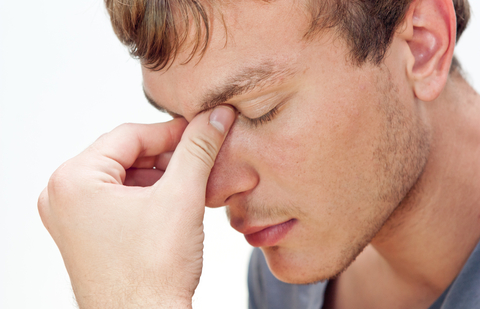Oxycodone is an opioid-based medication that is prescribed to treat moderate to severe pain conditions. It comes in both immediate release and controlled release formulations and is contained in several types of prescription pain relievers including Percocet, Percodan, Tylox and OxyContin. While oxycodone is an effective treatment for many chronic pain conditions, it can become addictive in some cases. This is particularly true if the drug is taken in higher doses than prescribed or if it is intentionally abused. In some cases, individuals become physically dependent even when taking the drug as prescribed. Individuals who suffer from addiction must often undergo oxycodone withdrawal treatment in order to stop using the drug or to reduce the amount of the drug that they are using.
Oxycodone Withdrawal Symptoms
The withdrawal symptoms often associated with oxycodone withdrawal are very similar to those that an individual experiences when they are withdrawing from other opiate-based drugs such as morphine, heroin, methadone or codeine. For some, withdrawal symptoms are mild and similar to having the flu. For others, withdrawal symptoms are more extreme.
At first, withdrawal symptoms consist of agitation, muscle aches, anxiety, tearing, inability to sleep / insomnia, runny nose, yawning, itching, loss of appetite, migraines, mood swings, nightmares, constipation, cold sweats, irritability, fatigue, body aches and sweating. As withdrawal continues, individuals may begin to experience the following additional symptoms: abdominal cramping, pupil dilation, diarrhea nausea, vomiting and goose bumps.
None of these symptoms are usually life threatening. However, in some cases, they can combine to cause situations that can place someone at high risk. For example, if an individual vomits and breathes it in, asphyxiation or a lung infection can occur. Additionally, vomiting and diarrhea can both cause dehydration as well as chemical imbalances in the body.
The most severe issue related to oxycodone withdrawal is that the process reduces the body’s ability to tolerate the drug. Thus, if the individual does start using the drug again, they can easily overdose on even small quantities. In fact,reports have shown that a large number of oxycodone deaths are those who have recently gone through withdrawal or detoxed from the drug.

How Long Does Oxycodone Withdrawal Lasts
The oxycodone withdrawal time frame and severity varies significantly for each individual and it could be do to a number of different factors including; age, emotional stability, health status and the severity and length of their oxycodone addiction. In general, oxycodone withdrawal symptoms begin between six and 30 hours after the last use of the medication.
Every human being is different and metabolizes drugs differently, therefore withdrawal symptoms experiences are never the same. In most cases, the longer that a person takes oxycodone and the higher the dosage, the more severe the withdrawal symptoms might be be. Most of the time individuals report, the complete withdrawal process might takes anywhere from a few days to one week.
Oxycodone Withdrawal Treatment
Withdrawing from oxycodone typically consists of treating the symptoms that occur during the process. This can be done in several ways, primarily through the use of medications to control or eliminate the symptoms. Medical personnel can use drugs such as Clonidine to reduce anxiety, muscle aches, agitation, sweating, cramping and a runny nose. They can also administer medications that controls vomiting and diarrhea for a certain extend. Other types of medical assistance are also available to assist with the detoxification process itself. A very effective option is the Waismann Method of Rapid Detox, in which through the use of antagonist medication through IV, Oxycodone detoxification is fully achieved while patient rest comfortably in a hospital under rigorous medical supervision.
It is strongly advised that individuals who wish to stop using oxycodone addiction treatment oxycodone seek professional treatment options instead of going trying it alone. This is particularly true for those who have been using the drug heavily or for an extended period of time, as they are more likely to experience withdrawal difficulties and possible complications. Those who do opt to withdraw on their own should seek immediate medical attention if the oxycodone withdrawal symptoms do not subside after seven days.
The symptoms from oxycodone withdrawal may be even more severe when the drug has masked prolonged conditions, the discomforts caused by those conditions can return intensely and sometimes confused with withdrawal symptoms or PAWS (post acute withdrawal symptoms).
Many individuals require long-term treatment options following the completion of the oxycodone withdrawal in order to achieve long term sobriety. There are a number of options including support groups, outpatient counseling, psychiatric treatment and outpatient or inpatient treatment programs.
